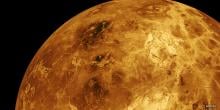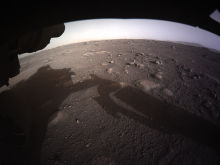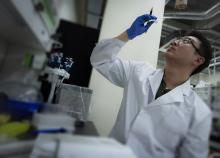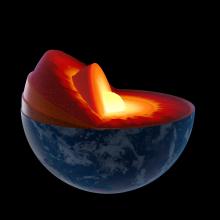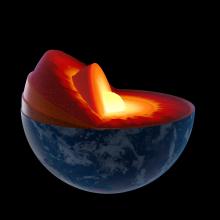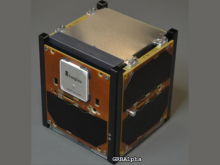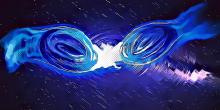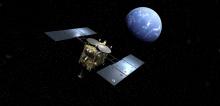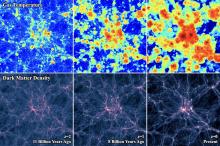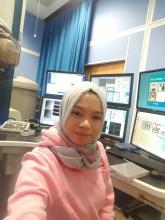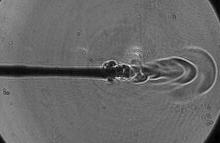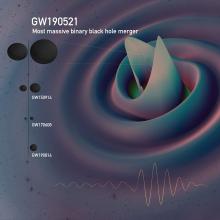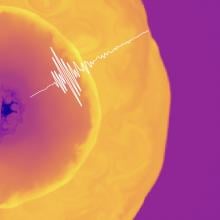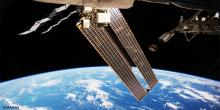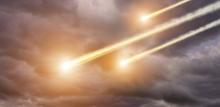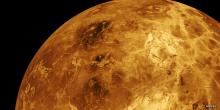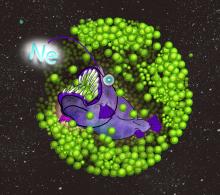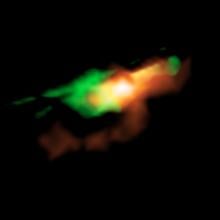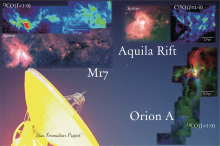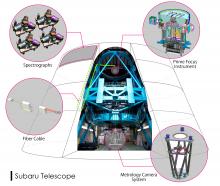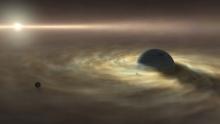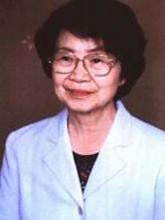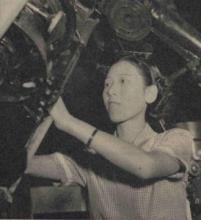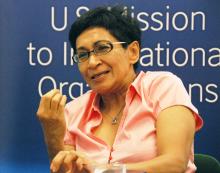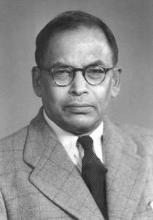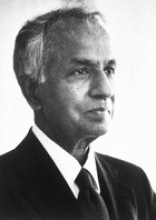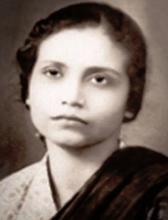Space
News
14 May 2021
Upcoming Solar System exploration missions will search for extraterrestrial (ET) life, but ET life may not be like Earth life. A new mass spectrometry analysis technique may allow for process-based ways to find ET life that is compositionally alien.
11 May 2021
Tony Z. Jia is a specially-appointed assistant professor and lab manager at Japan’s Earth-Life Science Institute (ELSI), based at the Tokyo Institute of Technology. He is an astrobiologist and shared highlights from his dual research/management role.
11 May 2021
Earth scientist Hitoshi Gomi investigates how plants are made by studying materials from the deep Earth, while creating a hospitable workplace at the Earth-Life Science Institute (ELSI) at the Tokyo Institute of Technology, Japan. He shared his research and the role of a lab manager with Asia Research News.
11 May 2021
地球の中心部の物質を研究しながら、共に研究をしている仲間が働きやすい環境を作るのが五味斎特任助教の日常だ。所属先の東京工業大学・地球生命研究所(ELSI)で地球科学者として行う研究活動と、ラボマネージャーの役目について、お話しを伺った。
28 Apr 2021
Scientists have recreated the reaction by which carbon isotopes made their way into different organic compounds, challenging the notion that organic compounds, such as amino acids, were formed by isotopically enriched substrates. Their discovery suggests that the building blocks of life in meteorites were derived from widely available substrates in the early solar system.
22 Apr 2021
The two most recent additions to the Subaru Telescope in February 2021, including a miniature telescope, have enabled the international Prime Focus Spectrograph team, led by Kavli IPMU members, to observe night sky spectra for the first time.
23 Mar 2021
A nanosatellite that Hiroshima University researchers helped develop was launched to orbit to monitor gamma-ray bursts in space.
25 Feb 2021
An international team of scientists led by the Galician Institute of High Energy Physics and the University of Aveiro, including an undergraduate from the Department of Physics at The Chinese University of Hong Kong (CUHK), has proposed the collision of two exotic compact objects known as boson stars as an alternative explanation for the origin of the gravitational wave signal GW190521.
16 Feb 2021
Our universe is dominated by a mysterious matter known as dark matter. Its name comes from the fact that dark matter does not absorb, reflect or emit electromagnetic radiation, making it difficult to detect.
15 Dec 2020
The Japan Aerospace Exploration Agency (JAXA) has confirmed that the gas collected from the sample container inside the re-entry capsule of the asteroid explorer, Hayabusa2, is a gas sample originating from asteroid Ryugu.
07 Dec 2020
Scientists from Japan and the USA have confirmed the presence in meteorites of a key organic molecule which may have been used to build other organic molecules, including some used by life. The discovery validates theories of the formation of organic compounds in extraterrestrial environments.
02 Dec 2020
A research team led by Kavli IPMU graduate student Hiroki Yoneda has shed new night on the massive star and its neutron star companion, which are thought to be at the core of the gamma-ray binary system LS 5039.
02 Dec 2020
A research team including Kavli IPMU Principal Investigator Naoki Yoshida has, in a world first, succeeded in performing a 6-dimensional simulation of neutrinos moving through the universe.
13 Nov 2020
How hot is the Universe today? How hot was it before? A new study by an international team of researchers, including members of the Kavli Institute for the Physics and Mathematics of the Universe (Kavli IPMU), suggests that the mean temperature of gas in large structures of the Universe has increased about 3 times in the last 8 billion years, to reach about two million Kelvin today.
02 Nov 2020
Asia Research News magazine highlights your recent results or ongoing project with a fascinating article for lay audiences, produced by our team of professional writers, editors and designers. Don't miss your chance to be a part of the 2021 edition. Submit by Nov. 30, 2020.
13 Oct 2020
An astronomical physicist at IIUM is investigating how to improve the surface coatings on observatory mirrors to make them more sensitive to detecting ripples in the Universe.
12 Oct 2020
When an optical fiber is immersed in liquid, a high temperature, high speed jet is discharged. Researchers expect this to be applied to medical treatment in the future. Now, a research team from Russia and Japan has explored this phenomenon further and revealed the reasons behind the jet formation.
27 Sep 2020
Researchers have shaken up a once accepted timeline for cataclysmic events in the early solar system. Geological and geochemical records indicate that the Earth-Moon system experienced a period of frequent and cataclysmic impacts from asteroids and other bodies. It was thought that this period had a relatively sudden onset, but the researchers have found evidence that this bombardment period may have started much earlier, and decreased in intensity over time.
03 Sep 2020
The Laser Interferometer Gravitational-wave Observatory (LIGO) Scientific Collaboration and the Virgo Collaboration (Virgo) announce the detection of gravitational waves from the spectacular collision of two black holes with “forbidden” masses. This marks the first time an intermediate-mass black hole has been observed. Two papers about the event, known as GW190521 have been accepted for publication today in the journal Physical Review Letters and The Astrophysical Journal Letters. Professor Tjonnie Li and Professor Juan Calderon Bustillo of the Department of Physics at The Chinese University of Hong Kong (CUHK), lead the only group in Hong Kong involved with the work of LIGO, and have been deeply involved in the analysis of this signal.
31 Aug 2020
The quantum chromodynamics (QCD) phase transition in core-collapse supernovae has been examined for the first time, using state-of-the-art multi-dimensional supernova simulations and unique imprints of such a phase transition on the emitted gravitational-wave and neutrino signals have been detected. The findings have been reported in a paper jointly authored by Professor Ming-chung Chu and Dr. Lap-Ming Lin from The Chinese University of Hong Kong (CUHK), Dr. Shuai Zha (CUHK PhD 2019) and Professor Evan O’Connor from Stockholm University, and Professor Sean M. Couch from Michigan State University. It was recently published and selected as Editors’ Suggestion in the Physical Review Letters, a top physics journal.
17 Jul 2020
Scientists have found the interstellar organic matter could produce an abundant supply of water by heating, suggesting that organic matter could be the source of terrestrial water.
06 Jul 2020
Hokkaido University, Tohoku University, and Myanmar Aerospace Engineering University (MAEU) have started their first satellite development program from September 1st, 2019.
09 Jun 2020
A new study reveals that asteroid impact sites in the ocean may possess a crucial link in explaining the formation of the essential molecules for life. The study discovered the emergence of amino acids that serve as the building blocks for proteins - demonstrating the role of meteorites in bringing life's molecules to Earth, and potentially Mars.
23 Apr 2020
An international research team has revealed that this ‘super-rotation’ is maintained near the equator by atmospheric tidal waves formed from solar heating on the planet’s dayside and cooling on its nightside.
30 Mar 2020
Neon inside a certain star core can eat so many electrons, it causes the star to collapse into a neutron star and produce a supernova.
27 Mar 2020
Astronomers obtained the first resolved image of disturbed gaseous clouds in a galaxy 11 billion light-years away by using ALMA.
24 Mar 2020
Astronomers have captured new, detailed maps of three nearby interstellar gas clouds containing regions of ongoing high-mass star formation.
10 Mar 2020
A key component of the Prime Focus Spectrograph, the metrology camera, can now make accurate measurements while set up at the bottom of the Subaru Telescope in Hawaii.
09 Mar 2020
Researchers found that dust encircling a young gas giant can create a “safety zone,” which keeps a large moon from falling into the planet as the system evolves.
Events
Sorry, no events coming up for this topic.
Researchers
Sorry, no researchers coming up for this topic.
Giants in history
Chinese electron microscopy specialist Li Fanghua (6 January 1932 – 24 January 2020) facilitated the high-resolution imaging of crystal structures by eliminating interference.
Haisako Koyama (1916 – 1997) was a Japanese solar observer whose dedication to recording sunspots – cooler parts of the sun’s surface that appear dark – produced a sunspot record of historic importance.
Angelita Castro Kelly (1942-2015) was the first female Mission Operations Manager (MOM) of NASA. She spearheaded and supervised the Earth Observing System missions during its developmental stage.
Malaysia’s first astrophysicist, Mazlan binti Othman (born 11 December 1951) was instrumental in launching the country’s first microsatellite, and in sending Malaysia’s first astronaut, Sheikh Muszaphar Shukor, into space.
Meghnad Saha (6 October 1893 – 16 February 1956) was an Indian astrophysicist best known for formulating the Saha ionization equation which describes the chemical and physical properties of stars.
Subrahmanyan Chandrasekhar (19 October 1910 – 21 August 1995) was an Indian astrophysicist who studied the structure and evolution of stars.
Abdus Suttar Khan (c. 1941 – 31 January 2008) was a Bangladeshi engineer who spent a significant part of his career conducting aerospace research with NASA, United Technology and Alstom.
Bibha Chowdhuri (1913 – 2 June 1991) was an Indian physicist who researched on particle physics and cosmic rays. In 1936, she was the only female to complete a M.Sc. degree at the University of Calcutta.


